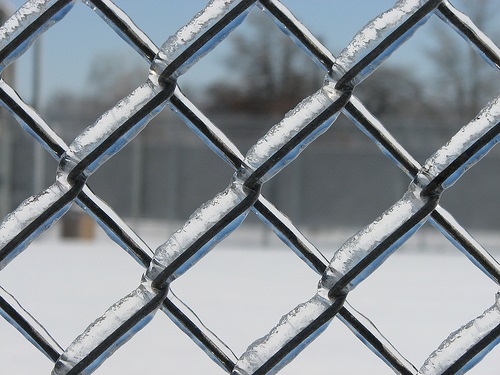
April 2, 2015; ThinkProgress
Yes, yes, we have all heard. This past winter in Boston was a doozy—apparently so much so that before the second of the four blizzards in February, the Massachusetts Bay Transportation Authority (MBTA) “hired” inmates to help dig out train stations. A public records request from ThinkProgress revealed that more than 90 inmates worked through subzero temperatures and earned between to $3 to $4 a day.
Although the news of inmates shoveling MBTA stops broke back in February, emails and MBTA internal documents recently retrieved by ThinkProgress revealed the details of the collaboration between the MBTA and the Massachusetts Department of Corrections (DOC), including who would be funding the equipment, protective wear, and the “daily inmate wage” for the inmates. In one of the emails, Michelle Goldman from the Homeland Security department relayed questions about getting the inmates better snow gear.
According to a spokesman for the DOC, regardless of the conditions and concerns expressed in the emails, the “equipment did not change depending on the day, location, or availability.” Back in February, Suffolk County inmates from a minimum-security prison volunteered as part of the Community Work Program, an initiative allows inmate nearing the end of their sentence to work to help finish neighboring community projects.
The idea came from Mayor Marty Walsh’s office as a way of using resources more efficiently. A note from February on the Suffolk County Sheriff’s Office website quoted Walsh:
“Creating opportunities for our inmates to give back to our community is an important component in successful re–entry,” said Mayor Walsh. “I am thrilled that the City is able to partner with the Suffolk County Sheriff’s Office to assist in snow removal in areas critical to the safety of our residents.”
The DOC spokesman also told ThinkProgress that inmates voluntarily opted into the program and that they were earning their daily inmate wage, which ranges from $3 to $4.
Sign up for our free newsletters
Subscribe to NPQ's newsletters to have our top stories delivered directly to your inbox.
By signing up, you agree to our privacy policy and terms of use, and to receive messages from NPQ and our partners.
Now, don’t be fooled by these numbers; three or four dollars per day can be a lot of money by prison standards. There hasn’t been a significant amount of research, but numbers from 2002 indicate the average American inmate in a state prison could make anywhere from $0.30 to $7.00 an hour. Federal inmates have a more narrow range, from $0.18 to $1.15 per hour. These numbers haven’t changed a lot in the last 13 years. Of course, compared to the $30 that the MBTA was offering everyone else, it’s not much at all.
The concept of prison labor dates back to the Reconstruction and Jim Crow eras, spanning the late 1800s and the early 20th century, where prison work was essentially “slavery by another name,” according to historian Douglas Blackmon. “Convict-leasing,” as it was known, allowed mostly black inmates to be leased out involuntarily to private companies to work in coalmines, plantations, and factories. While the inmates were treated horribly and worked in terrible conditions, it was incredibly profitable for the states and private companies.
According to Blackmon, inmates “were compelled to labor without compensation, were repeatedly bought and sold, and were forced to do the bidding of white masters through the regular application of extraordinary physical coercion.” While today prisoners work voluntarily rather than being forced, the parallels are hard to ignore, especially given the extremely low wages as compared to outside society.
Should inmates be paid more? What is the proper wage to pay inmates? How are these wages to be calculated—state by state? By the inmate? By the job they are assigned? Inmates don’t necessarily need much money, as they’re not paying taxes or for their room and board. Aside from items they can buy within the prison system, what purpose is served by paying a more significant wage?
Consider how important it is that inmates maintain or develop a productive work ethic prior to being released back into society. For the for-profit industries that invest in prison labor, consider how inmates could be motivated with a more reasonable salary. Earning a living would be particularly important for any inmate who enters without a support system or any kind of savings to help them adjust once they are released. We already know the impact that an incarceration record can have on a former inmate’s job prospects, but how do these low wages factor into their post-release attitude?
All of this must be balanced with the realities of paying inmates more. A past study by the U.S. Government Accountability Office from 1993 entertained the idea of paying prison labor minimum wage. Although perhaps too old a study to be relevant, the report did predictably find a significant difference between what prisons were paying at the time for prison labor and what they would have to pay with a minimum wage—a difference of millions of dollars. To the extent that it’s possible to pay inmates more, however, hinges at least in part on whether it’s a worthwhile venture.
The unfortunate truth is that the system knows that once stripped of their basic freedom, it does not take much money to employ inmates and give them a glimpse of civilized society. These considerations come back to whether we as a society want to invest and reform the prison system, rather than using the facilities as temporary solutions to a much larger problem.—Shafaq Hasan













